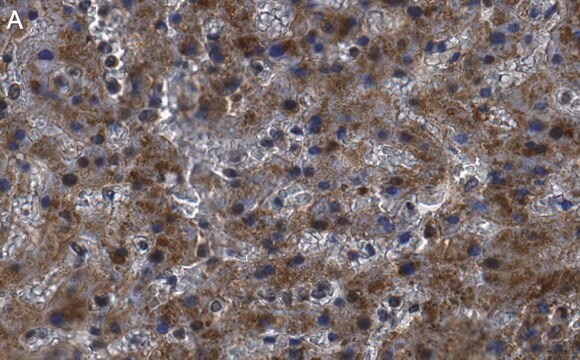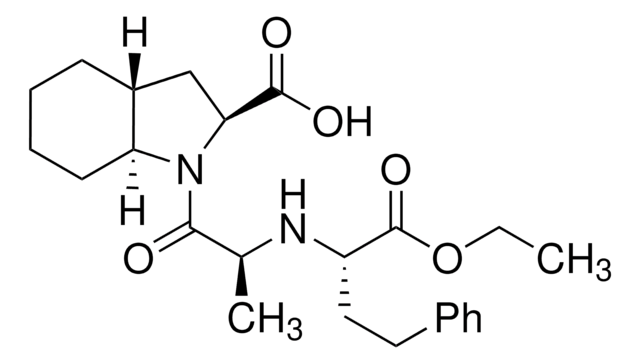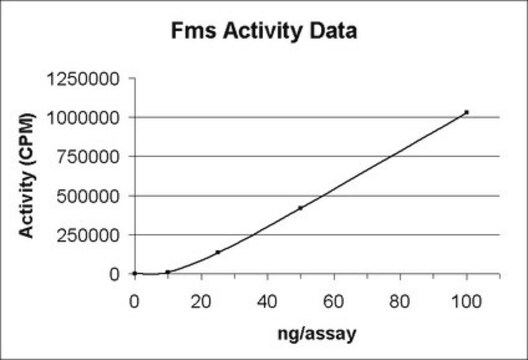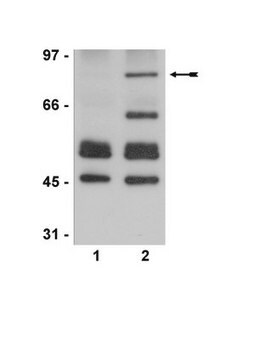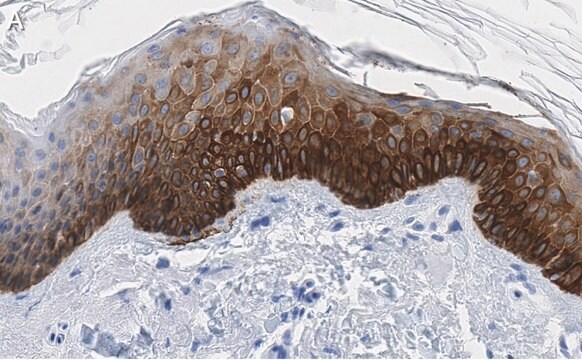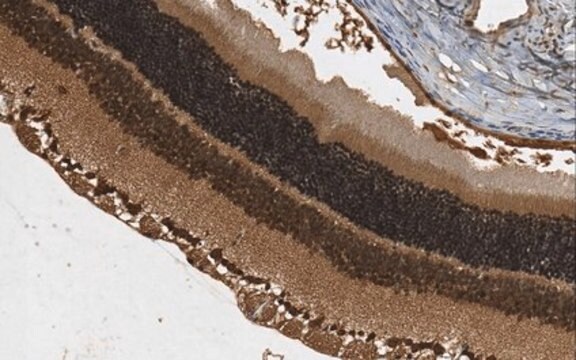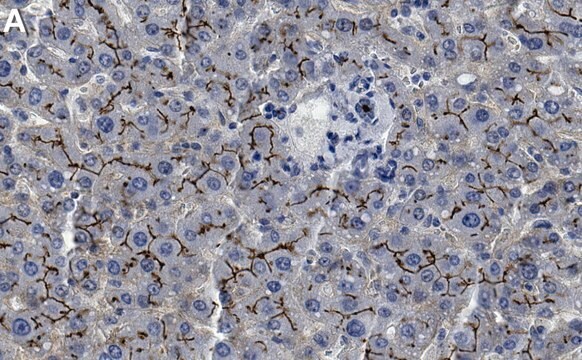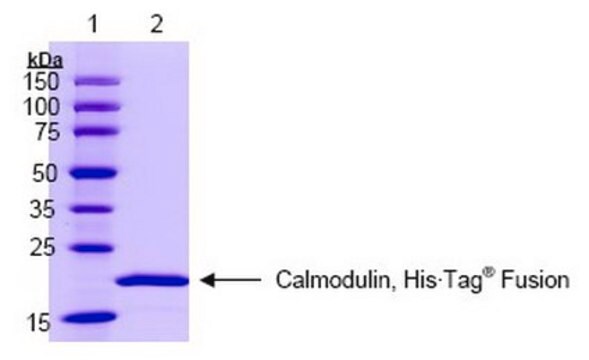06-916
Anti-acetyl-p53 (Lys373) Antibody
serum, Upstate®
Sign Into View Organizational & Contract Pricing
All Photos(1)
About This Item
UNSPSC Code:
12352203
eCl@ss:
32160702
NACRES:
NA.41
Recommended Products
biological source
rabbit
Quality Level
antibody form
serum
antibody product type
primary antibodies
clone
polyclonal
species reactivity
human
manufacturer/tradename
Upstate®
technique(s)
immunoprecipitation (IP): suitable
western blot: suitable
isotype
IgG
NCBI accession no.
UniProt accession no.
shipped in
wet ice
target post-translational modification
acetylation (Lys373)
Gene Information
human ... TP53(7157)
General description
p53 is a DNA-binding, oligomerization domain and transcription activation domain-containing tumor suppressor that upregulates growth arrest and apoptosis-related genes in response to stress signals, thereby influencing programmed cell death, cell differentiation and cell cycle control mechanisms. p53 localizes to the nucleus yet can be chaperoned to the cytoplasm by the negative regulator MDM2, an E3 ubiquitin ligase that is upregulated in the presence of active p53, where MDM2 polyubiquitinates p53 for proteasome targeting. p53 can assemble into tetramers in the absence of DNA, fluctuates between latent and active (DNA-binding) conformations, and is differentially activated through posttranslational modifications including phosphorylation and acetylation. Mutations in the DNA-binding domain (DBD) (amino acids 110-286) of p53 can compromise energetically favorable association with cis elements and are implicated in several human cancers.
Specificity
Recognizes p53 acetylated in vitro by recombinant p300, and for peptide containing acetyl-lysine 373 but not for the peptide containing acetyl-lysine 320; modest cross-reactivity for p53 acetylated in vitro by recombinant PCAF.
Immunogen
peptide corresponding to amino acids 367-379 of human p53 (SHLKSKACKGQSTSR, where ACK denotes acetyl-lysine).
Application
Anti-acetyl-p53 (Lys373) Antibody is a Rabbit Polyclonal Antibody for detection of acetyl-p53 (Lys373) also known as Antigen NY-CO-13, Phosphoprotein p53, Tumor suppressor p53, p53 antigen & has been tested in IP & WB.
Quality
routinely evaluated by immunoblot on GST-p53 acetylated by recombinant p300, HAT domain (Catalog #14-418) in an in vitro acetyl transferase assay
Target description
53 kDa
Linkage
Replaces: 04-1137
Physical form
Protein A Purified immunoglobulin in 0.1M Tris-glycine, pH 7.4, 0.15M NaCl, 0.02% sodium azide, 0.1mg/ml BSA
Other Notes
Concentration: Please refer to the Certificate of Analysis for the lot-specific concentration.
Legal Information
UPSTATE is a registered trademark of Merck KGaA, Darmstadt, Germany
Not finding the right product?
Try our Product Selector Tool.
Storage Class
10 - Combustible liquids
wgk_germany
WGK 1
Certificates of Analysis (COA)
Search for Certificates of Analysis (COA) by entering the products Lot/Batch Number. Lot and Batch Numbers can be found on a product’s label following the words ‘Lot’ or ‘Batch’.
Already Own This Product?
Find documentation for the products that you have recently purchased in the Document Library.
Green tea polyphenols increase p53 transcriptional activity and acetylation by suppressing class I histone deacetylases.
Thakur, VS; Gupta, K; Gupta, S
International journal of oncology null
Hwei-Ling Cheng et al.
Proceedings of the National Academy of Sciences of the United States of America, 100(19), 10794-10799 (2003-09-10)
SIRT1 is a mammalian homolog of the Saccharomyces cerevisiae chromatin silencing factor Sir2. Dominant-negative and overexpression studies have implicated a role for SIRT1 in deacetylating the p53 tumor suppressor protein to dampen apoptotic and cellular senescence pathways. To elucidate SIRT1
A p53-CBP/p300 transcription module is required for GAP-43 expression, axon outgrowth, and regeneration.
Tedeschi, A; Nguyen, T; Puttagunta, R; Gaub, P; Di Giovanni, S
Cell Death and Differentiation null
Xiaowen Ge et al.
Frontiers in oncology, 11, 751904-751904 (2021-12-28)
Drug resistance remains a serious challenge to rituximab therapy in B-NHL (B cell non-Hodgkin's lymphoma). CDC (complement-dependent cytotoxicity) has been proposed as a major antitumor mechanism of rituximab, and direct abrogation of CD59 function partially restores rituximab sensitivity with high
Deacetylation of p53 after nerve growth factor treatment in PC12 cells as a post-translational modification mechanism of neurotrophin-induced tumor suppressor activation.
Vaghefi, H; Neet, KE
Oncogene null
Our team of scientists has experience in all areas of research including Life Science, Material Science, Chemical Synthesis, Chromatography, Analytical and many others.
Contact Technical Service